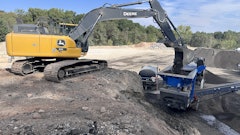In the past few months we have consulted with more than 15 contractors who told us they perform "quality work." But only two of those contractors could clearly point to anything measurable to prove their self-proclaimed excellence.
One of our seven "Non-Negotiables of Construction" (from our Next Level Contractor resources) includes the "Differentiate or Die" marketing and sales concept. For many contractors, "dying" is likely to result because the contractor doesn't know how to measure "quality" and knows even less about how to use the information as a marketing tool.
If you are going to claim "quality" as a selling point, you need to define it and measure it so your customers can easily and comfortably grasp it. Here are a few of the easiest ways to measure the quality that you are producing.
- Track the number of customer call-backs. Simply keep a running total of times your people must return to a previously completed project to re-do some aspect of the work.
- Quantify the costs associated with call-backs. Calculate the actual costs to complete each correction. This should include labor, materials, equipment, and any other concession you make to maintain their business.
- Track "on-time-delivery" of job completion. Many customers don't believe a contractor is going to get work done when they promise. Track your actual start and finish dates and compare against what was proposed.
- Track labor and material costs. This allows you to monitor how accurate your estimating process is compared to actual work performed. It is critical that a contractor thoroughly understands costs associated with completing work. Greater knowledge of these costs enables a contractor to be more competitive at the bidding effort. Expertise gained here can give a contractor more confidence to provide more guarantees to their customers about their accuracy in pricing work based on their production efficiencies.
- Maintain equipment. Measuring this requires a schedule that includes when each piece of equipment, from tools to trucks, will be serviced. Accuracy on length of time between scheduled preventive maintenance will not only extend the life of equipment it can be leveraged as a marketing point that your firm takes care of its own equipment … just like your customers have a preventive maintenance mindset with their property.
- Monitor unit costs of production. Break your work processes into measurable segments of work and then measure the production rate (sq. ft./hr. or linear ft./hr. are examples) of those segments. For example, a paving contractor might split up the actual job process into site cleaning and preparation, saw cuts/dig outs, paving, compaction, and cleanup.
Measuring these five areas can help a contractor monitor business efficiencies, and much of the same data should be incorporated into the marketing and sales effort.
Consider the following examples: Tracking shows Acme Paving completes 97% of scheduled projects on time. Estimators include this fact in sales efforts and soon learn that prospects, especially residential customers, appreciate this and base their buying decision partly on this fact.
Another contractor's preventive maintenance efforts reduce equipment breakdowns to less than 1.5%. They play off this fact to reaffirm their marketing pitch, offering a thorough pavement maintenance plan for commercial property owners. Customers interpret the 1.5% figure as proof that a contractor who maintains that kind of effort with winning results can be relied on to maintain properties as well.
So look into what you currently measure, or could measure, as it relates to quantifying your quality workmanship. And remember, every contractor claims to do quality work — those who can define their quality and prove their quality differentiate themselves from their competition and make their customers' buying decisions easier.
Brad Humphrey, president of Pinnacle Performance Group, and partner Jeff Stokes recently created the Next Level Contractor. This firm specializes in assisting contractors of all sizes in their quest to be the best. The Differentiate or Die resource can be ordered on-line by going to www.nextlevelcontractor.com.















